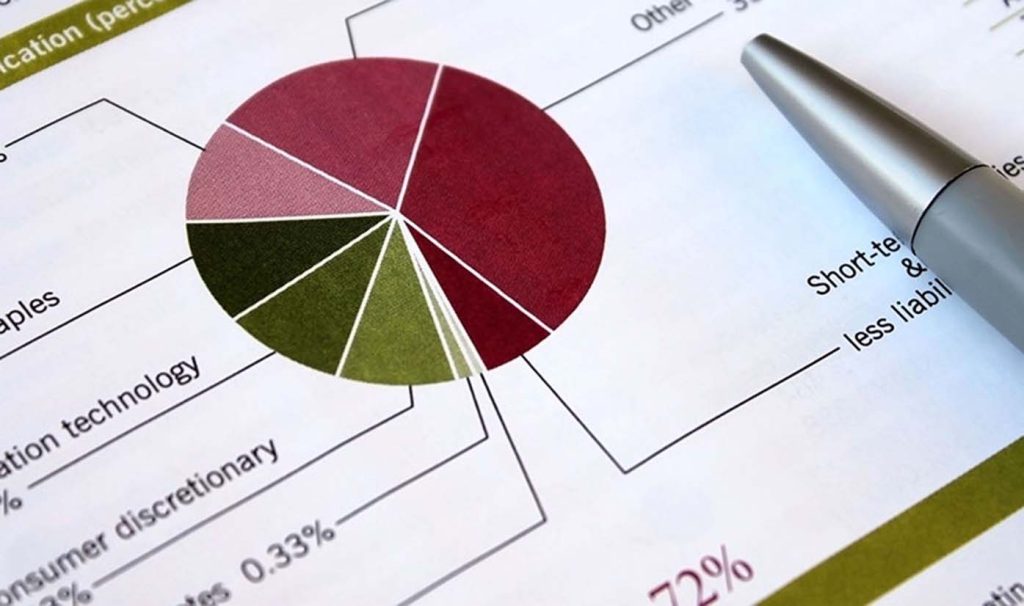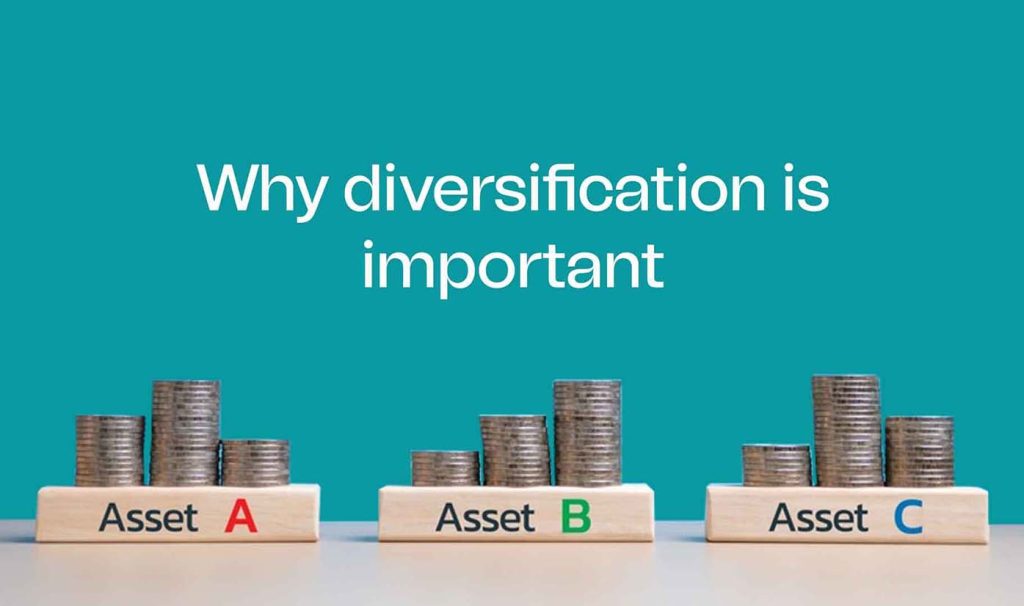Investing can sometimes feel like walking a tightrope—balancing risk and reward while attempting to reach your financial goals. It’s a challenge that requires strategy, knowledge, and patience. One of the most powerful concepts in the world of investing, and perhaps the most essential to building a successful portfolio, is diversification.
Many investors, especially those new to the world of finance, often make the mistake of putting all their eggs in one basket, investing heavily in a single asset or sector. This approach, while tempting due to the promise of high returns, can leave you vulnerable to significant financial setbacks. Diversification, however, offers a simple yet effective way to spread risk and increase the chances of long-term success.
We’ll take a deep dive into why diversification is critical to any investment strategy, how it helps protect your portfolio, and how to implement it properly. Plus, we’ll explore the types of investments you should consider to achieve a well-diversified portfolio.
What is Diversification?
At its core, diversification is the practice of spreading your investments across different types of assets, sectors, industries, and geographic regions. The goal is to avoid putting all of your money into a single investment, which can lead to disastrous consequences if that investment underperforms.
Instead, by holding a range of different assets, you reduce the risk that a single loss will severely damage your overall portfolio. Diversification helps smooth out the bumps in the road when markets experience volatility, making it an essential element of a well-balanced investment strategy.
Why is Diversification Important?
- Reduces Risk: When you diversify, you spread the risk across multiple assets. If one investment performs poorly, other investments may perform well and offset those losses. This balance helps to protect your overall portfolio from sudden market crashes or negative events affecting a single investment.
- Minimizes the Impact of Market Volatility: Financial markets are inherently volatile, with asset prices frequently rising and falling based on economic conditions, political events, and market sentiment. By holding a diversified mix of assets, you help reduce the effects of short-term market fluctuations on your portfolio’s value.
- Improves the Potential for Long-Term Growth: While diversification reduces risk, it also opens up the possibility for long-term gains. By investing in different sectors, industries, and regions, you position yourself to benefit from different growth opportunities. For example, tech stocks might perform well during an economic boom, while real estate or commodities might outperform during periods of inflation.
- Ensures Better Portfolio Performance: Historically, diversified portfolios tend to outperform those that are concentrated in a single asset or sector. Over time, a diversified portfolio tends to reduce the impact of poor-performing investments and smooth out returns, leading to more consistent and reliable growth.
The Different Types of Diversification
To fully understand how diversification works, let’s take a look at the different types of diversification you can employ in your investment portfolio:
1. Asset Class Diversification
This refers to spreading your investments across various asset classes, such as stocks, bonds, real estate, and commodities. Each asset class has unique characteristics and reacts differently to market conditions. By holding different asset classes, you create a balanced portfolio that can weather different types of economic cycles.
- Stocks: Equities offer the potential for high returns but are also the most volatile. Stock prices fluctuate based on company performance, industry trends, and market sentiment.
- Bonds: Bonds are generally more stable than stocks and provide steady income through interest payments. They are particularly useful for reducing risk and providing stability to your portfolio.
- Real Estate: Real estate investments, whether through direct property ownership or real estate investment trusts (REITs), can provide diversification through physical assets and rental income.
- Commodities: Gold, oil, and other commodities tend to perform well during inflationary periods. They provide a hedge against economic instability and currency devaluation.
2. Sector Diversification

Within the stock market, there are multiple sectors—each with different risk profiles and growth prospects. These include:
- Technology: Tech stocks are highly volatile but have massive growth potential. Think of companies like Apple, Microsoft, and Tesla.
- Healthcare: The healthcare sector is known for steady growth, as people will always need medical care, regardless of the economic environment.
- Consumer Goods: These companies produce essential items like food, household products, and personal care goods. These stocks tend to be more stable during recessions.
- Financials: Banks, insurance companies, and investment firms are part of this sector. Financials can be volatile but tend to perform well in periods of economic growth.
Spreading your investments across various sectors ensures that your portfolio is not overly dependent on the performance of any single sector.
3. Geographic Diversification
Investing solely in your home country exposes you to the economic risks of that specific region. By diversifying into international markets, you spread the risk and take advantage of global growth opportunities.
- Domestic Stocks: These stocks are subject to the economic conditions of your home country. If your country goes through an economic downturn, it could negatively impact the performance of these stocks.
- International Stocks: International stocks provide access to markets with different economic cycles, which can reduce the overall risk of your portfolio. Emerging markets, for example, may offer higher growth potential, but they also come with more volatility.
Investing in foreign markets through international mutual funds or ETFs (exchange-traded funds) is an easy way to gain exposure to these global opportunities.
4. Time Diversification (Dollar-Cost Averaging)
Time diversification refers to investing consistently over time, regardless of market conditions. Dollar-cost averaging (DCA) is a strategy in which you invest a fixed amount of money into an asset at regular intervals, regardless of its price.
By using DCA, you reduce the impact of short-term market fluctuations on your overall portfolio. Over time, you buy more shares when prices are low and fewer shares when prices are high, leading to a more favorable average cost.
How to Diversify Your Investment Portfolio
Now that you understand the importance of diversification, let’s look at how to implement it in your portfolio. Here are some practical steps to help you diversify your investments:
1. Start with a Solid Foundation of Index Funds and ETFs
One of the easiest ways to diversify is by investing in index funds or ETFs. These funds hold a wide variety of stocks and bonds, which means you automatically gain exposure to a broad market index or a specific sector. For example:
- Vanguard Total Stock Market ETF (VTI): This ETF gives you exposure to the entire U.S. stock market, including small, mid, and large-cap stocks.
- iShares MSCI ACWI ETF (ACWI): This ETF provides exposure to both domestic and international stocks, allowing you to diversify across global markets.
- Vanguard Total Bond Market ETF (BND): Bonds can reduce the overall volatility of your portfolio, and this ETF gives you exposure to a wide range of U.S. bonds.
2. Invest in Real Estate
Real estate can provide diversification beyond stocks and bonds. You can invest directly in rental properties or through REITs (Real Estate Investment Trusts), which give you exposure to commercial and residential properties without having to manage physical properties.
- REIT ETFs: Funds like the Vanguard Real Estate ETF (VNQ) allow you to invest in real estate without the hassle of property management.
3. Consider Commodities

Commodities like gold, oil, and agricultural products can offer a hedge against inflation and market downturns. You can invest in commodities through ETFs or mutual funds that track the prices of these assets.
- SPDR Gold Trust (GLD): This ETF tracks the price of gold and can be a good hedge against inflation and economic instability.
4. Sector Diversification
To diversify geographically, consider investing in international stocks through global ETFs or mutual funds. Exposure to emerging markets can add significant growth potential to your portfolio.
- Vanguard FTSE All-World ex-US ETF (VEU): This ETF gives you exposure to stocks in developed and emerging markets outside the U.S.
- iShares MSCI Emerging Markets ETF (EEM): This ETF focuses specifically on emerging markets, which often offer higher growth potential but with more risk.
Why Diversification is Essential
Diversification is not just a buzzword in the investing world—it’s a crucial principle for building long-term wealth and minimizing risk. By spreading your investments across different asset classes, sectors, and geographic regions, you create a more resilient portfolio that can weather various market conditions.
Whether you’re a conservative investor looking to preserve capital or a more aggressive investor aiming for higher returns, diversification offers protection while also providing opportunities for growth. Remember, the key is to strike the right balance between risk and reward, and with careful planning and strategic allocation, you can build a portfolio that helps you reach your financial goals while minimizing unnecessary risks.
